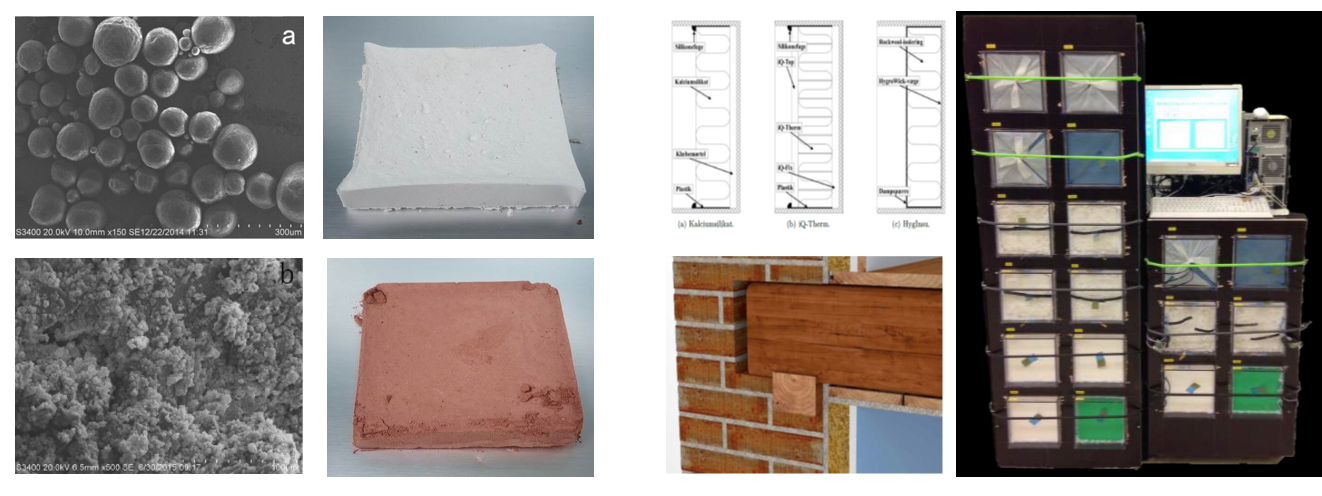moisture-buffering

Moisture buffering is the ability of surface materials in the indoor environment to moderate the indoor humidity variations through adsorption or desorption. Materials with high moisture buffering capacity could be used to passively control the indoor moisture condition and consequently improve the indoor environmental quality and reduce the latent heat load of buildings. It is essential to accurately calculate the moisture buffering effect in building energy simulations. However, in many building simulation tools, moisture buffering has been neglected. In those building tools that include moisture model, moisture buffering either has been estimated by very simple approximations or has been calculated by complex coupled heat-air-moisture transfer models that require orders of magnitude more computing time than simple energy prediction. Qin's group has developed a new moisture prediction model with fast solution time and reasonable accuracy based on the moisture buffer value (MBV) theory.

Relevant papers:
- M. Zhang, M. QIN*, R. Carsten and Z. Chen, Moisture buffering phenomenon and its impact on building energy consumption, Applied Thermal Engineering, Vol. 124, 2017.
- K. Zu, M. QIN*, C. Rode, M. Libralato, Development of a Moisture Buffer Value Model (MBM) for Indoor Moisture Prediction, Applied Thermal Engineering, Vol. 171, 2020.
- X. Feng, M. QIN*, S. Cui, C. Rode, Metal-Organic Framework MIL-100(Fe) as a Novel Moisture Buffer Material for Energy-Efficient Indoor Humidity Control, Building and Environment, Vol. 145, 2018.
- D. Ding, O. Rasmussen, M. QIN*, Moisture buffer value for hygroscopic materials with different thicknesses, Building and Environment, 258, 111581, 2024.